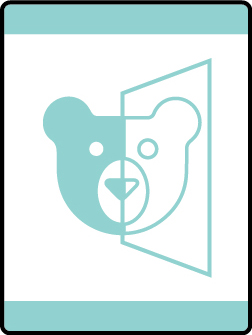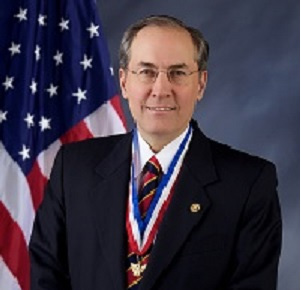Feedback
Feedback
Please provide feedback on your experience of this adventure or activity
Report Quality Assurance
If there are errors or issues with this adventure/ activity, please go to the Report Quality Assurance Page.
Adventure/Activity Feedback Form
This feedback helps identify things den leaders like and opportunities for improvement.
Bear >
Bear Trail Mix Math
Print This Page
Bear – 3rd Grade
Balancing Bears
Elective

Requirement 1
Bear Trail Mix Math
Bear – 3rd Grade
Balancing Bears
Elective

Requirement 1
Bear Trail Mix Math
Snapshot of Activity
Use math to make a bag of trail mix.
Indoor
2
3
2
If you want to know more about The Adventure Activity Key click here.
Supply List
- Trail Mix Math worksheet found in Additional Resources
- Printer
- Pencils, one for each Cub Scout
- 1 box of Chex cereal
- 1 box of chocolate Cherrios
- 1 bag of Craisins
- 1 bag of twisted pretzels
- 1 bag of yogurt chips
- 1 small bag of M&Ms
- 1 bowl of popcorn
- 1 small bag od Reece’s Pieces
- 1 bag of pretzel sticks
- 1 bag of peanuts
- 1 small bowl of almonds
- 1 bag of mini marshmallows
- 1/4 cup measuring cup or scoop OR 1 tablespoon measuring spoon – one for each Cub Scout
- Covering for tabletop
- Large bowl OR 1 bowl for each Cub Scout
- Snack bags, enough for Cub Scouts and adults
Directions
This activity may be done by the den making the trail mix together or having each individual make their own trail mix. If each individual Cub Scout is making their trail mix consider using a smaller measurement such as a tablespoon. instead of a 1/4 cup.
Before the meeting:
- Review food allergies for Cub Scouts.
- Print Trail Mix Math worksheet, one for each Cub Scout.
- Cover the tabletop. Set out food items on the table. Do not open them.
- Set up meeting space for Cubs Scouts to have room to work on their worksheet and prepare trail mix.
During the meeting
- Hand out Trail Mix Math Ingredients worksheets and pencils.
- Explain they will be creating trail mix based on items found on the table. As a den or as individuals they pick out the ingredients they would like to use to make trail mix. They are making enough for the entire group. Explain that to total number of ingredients chosen is how many parts that will make up the whole trail mix, this number is called the denominator and is the number on the bottom of a fraction. So if they pick 8 different ingredients the denominator will be 8.
- They do not have to use all the ingredients; they should pick and choose what they like.
- Once they have decided which items they would like to use, fill out the Trail Mix Math worksheet.
- Enter a “0” above the items that were not selected.
- Have them complete number 1 “What is the total number of ingredients to choose from to create trail mix.” This is the total number of items on the table that were selected to make the trail mix. This is the denominator.
- Next, complete number 2, have them enter the number of scoops they will place of that item into their trail mix. This will indicate how many parts of the whole this item is of the trail mix. For now have them enter a 1 for 1 scoop. This number is called the numerator and is place at the top of the fraction. Ask a Cub Scout to share what fraction they have. It will be the number of scoops of that item (1) over the number of ingredients they chose.
- For number 3, have them place a zero if the box if they didn’t use the item and the fraction if they did. If they have two items used in their trail mix share with them what they would do is simply add the numerator (top number) and leave the denominator (bottom number) the same. Explain that since the total size of our trail mix didn’t change and that is what the denominator represents it too doesn’t change.
- Have them make their trail mix following their recipe.
- Are you happy with the amount you have of each item?
- Now we are going to add another scoop, by adding another scoop we are going increase how much trail mix we will have so what number of our fraction will we need to change? (denominator / bottom number)
- By how much will we need to increase the denominator by if we add one scoop? (One) Have them change the denominator for all the fractions made in step 2.
- What if we added two more scoops? (Two)
- Give Cub Scouts the choice of adding another scoop of a new ingredient OR adding a second scoop of an ingredient they already have.
- What fraction is used if we added a new ingredient? ( 1 as the numerator -top number / denominator stays the same, we already increased it when we decided to add another scoop)
- What fraction is used if we added a second scoop of an ingredient we already have? (The numerator changes to 2 to represent 2 scoops)
- Explain that the top number, numerator, shows how many scoops of that ingredient is in the trail mix. The bottom number, denominator, is how many total scoops of everything is in the trail mix.
- Ask Cub Scouts if we added all the numerators (top numbers) together what number should we get? (the same as the denominator (bottom number))
- Have them finish making their trail mix with the added ingredient. If making it as a den divide the trail mix into smaller bags for each Cub Scout.
Tip: Take the trail mix along on activities to complete requirements 3 and 4.




